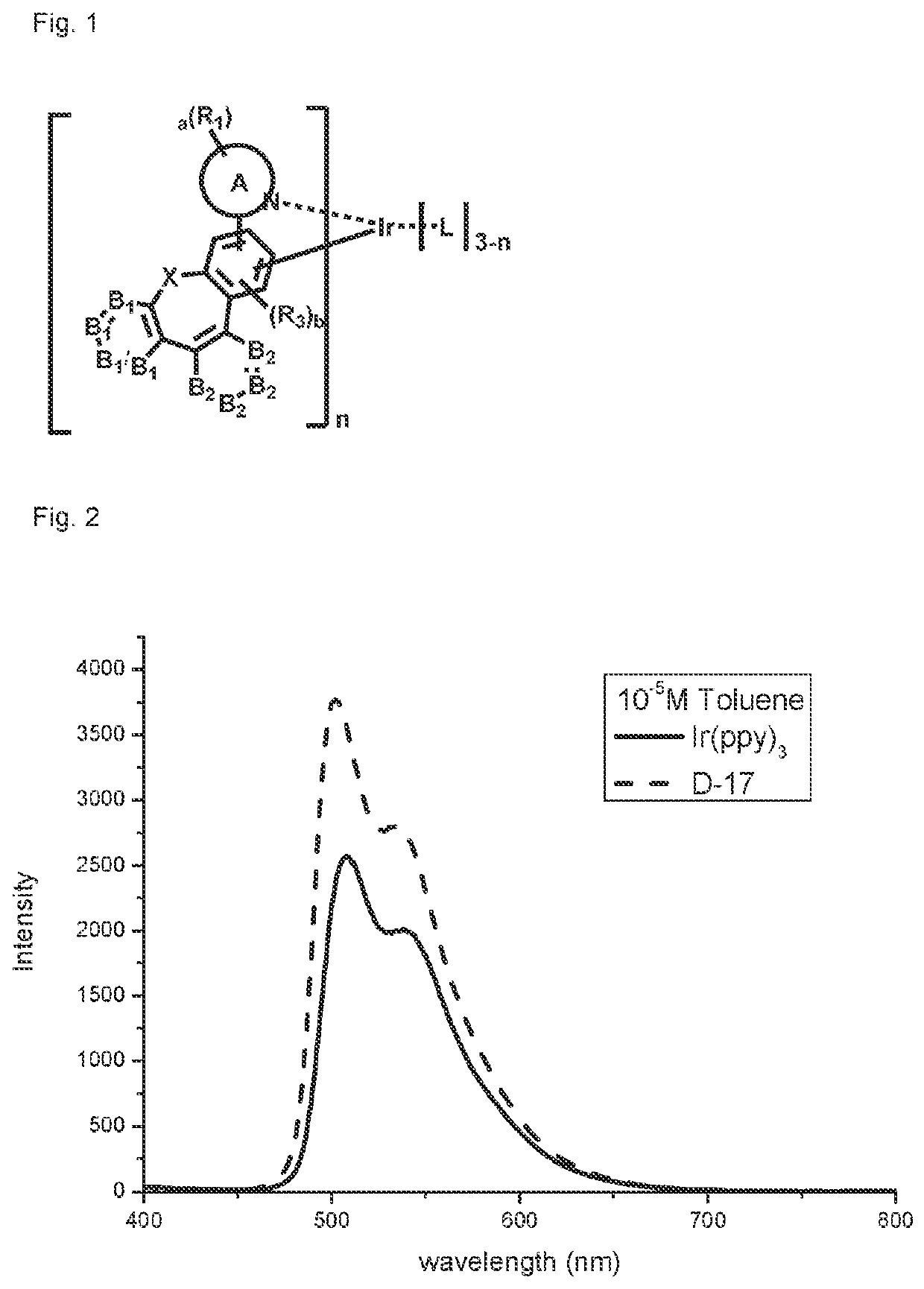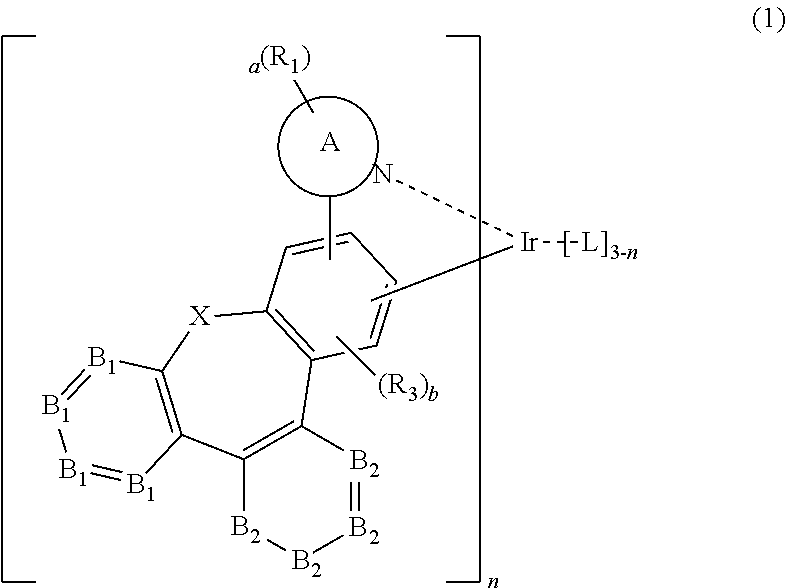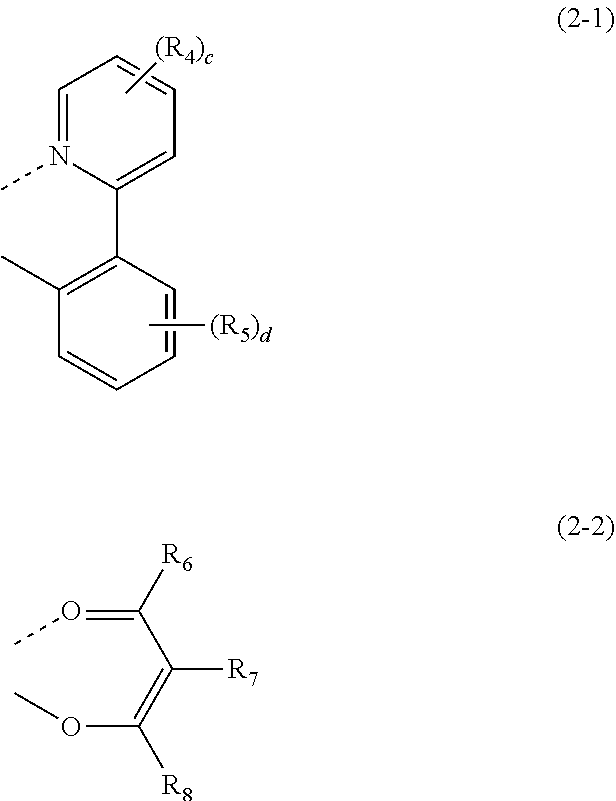Organic electroluminescent compound and organic electroluminescent device comprising the same
a technology of organic electroluminescent devices and electroluminescent compounds, which is applied in the direction of electroluminescent light sources, chemistry apparatuses and processes, and compositions. it can solve the problems of not being able to develop a better oled device performance, and achieve high luminous efficiency, long lifespan properties, and low operating voltage
- Summary
- Abstract
- Description
- Claims
- Application Information
AI Technical Summary
Benefits of technology
Problems solved by technology
Method used
Image
Examples
example 1
on of Compound D-17
[0048]
1) Synthesis of Compound 1-3
[0049]15 g of compound 1-1 (87 mmol), 14 g of compound 1-2 (114 mmol), 3 g of Pd(PPh3)4 (2.6 mmol), and 36 g of K2CO3 (260 mmol) were added to 300 mL of toluene, 150 mL of EtOH, and 130 mL of H2O, and the mixture was stirred at 100° C. for 3 hours. After completion of the reaction, the reaction mixture was extracted with ethyl acetate, and moisture was removed with MgSO4, followed by distillation under reduced pressure. Thereafter, the resulting mixture was separated by column chromatography with methylene chloride:hexane=1:2 to obtain 10 g of white solid compound 1-3 (yield: 68%).
2) Synthesis of Compound 1-4
[0050]10 g of compound 1-3 (30 mmol) and 8 g of IrCl3.xH2O (27 mmol) were added to 200 mL of 2-ethoxyethanol and 70 mL of H2O, and the mixture was stirred at 140° C. for 24 hours. After completion of the reaction, the reaction mixture was cooled to room temperature, and washed with water and MeOH, and then dried to obtain 11.4...
PUM
| Property | Measurement | Unit |
|---|---|---|
| electroluminescent | aaaaa | aaaaa |
| organic electroluminescent | aaaaa | aaaaa |
| organic | aaaaa | aaaaa |
Abstract
Description
Claims
Application Information
 Login to View More
Login to View More - R&D Engineer
- R&D Manager
- IP Professional
- Industry Leading Data Capabilities
- Powerful AI technology
- Patent DNA Extraction
Browse by: Latest US Patents, China's latest patents, Technical Efficacy Thesaurus, Application Domain, Technology Topic, Popular Technical Reports.
© 2024 PatSnap. All rights reserved.Legal|Privacy policy|Modern Slavery Act Transparency Statement|Sitemap|About US| Contact US: help@patsnap.com










